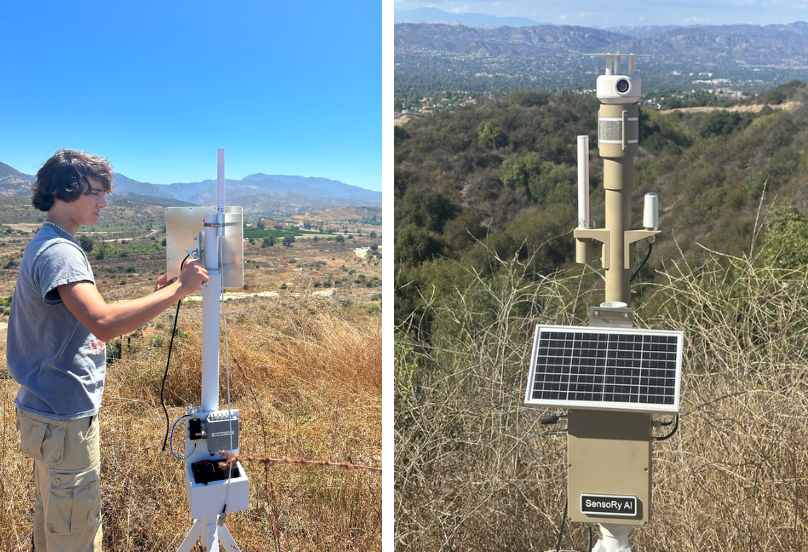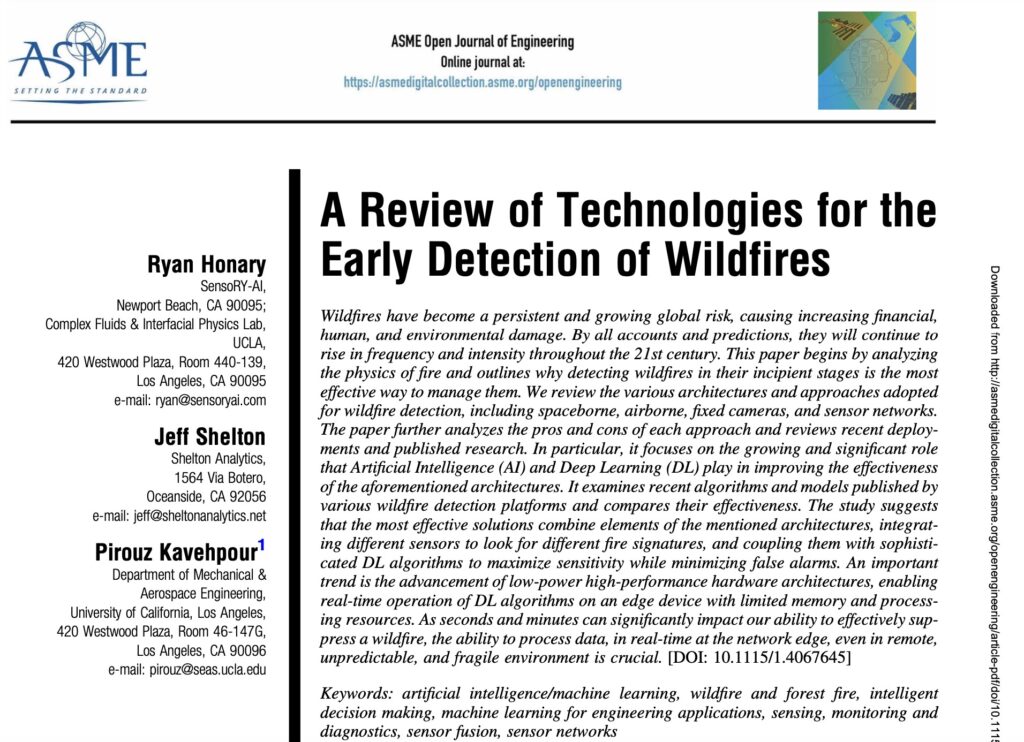
SensoRy AI is working to create a solution capable of detecting environmental issues such as wildfires, methane gas leaks, water quality and more all their incipient stage, before they are detected by any other existing solution.
The revolutionary technology developed by SensoRy AI leveraging sensors placed on the edge of the network coupled with Edge AI will provide constant monitoring of potential environmental hazards and provide ultra early risk assessment and/or notification.
The around the clock monitoring will provide immediate detection when a problem occurs and can even predict problems before they happen.







Sensory AI is committed to developing technologies at the intersection of humanity and the environment. Our solutions conserve and protect natural resources, prevent disasters, and mitigate the impacts of climate change.
This paper was co-authored by our founder, Ryan Honary, retired fire captain and fire behavior specialist Captain Jeff Shelton, and Dr. Kavehpour, Professor of Mechanical and Aerospace Engineering at UCLA. The paper explores the physics of fire and emphasizes the critical importance of ultra-early detection, particularly for wind-driven wildfires. It also provides a comprehensive analysis and comparison of existing technologies, products, and solutions for wildfire detection. Published in the American Society of Mechanical Engineers’ Open Journal of Engineering in January 2025, it has consistently ranked among the Top 3 Most Read papers in the publication.
